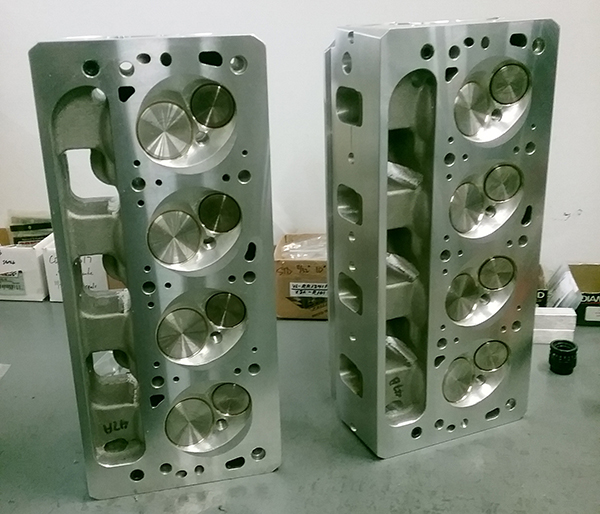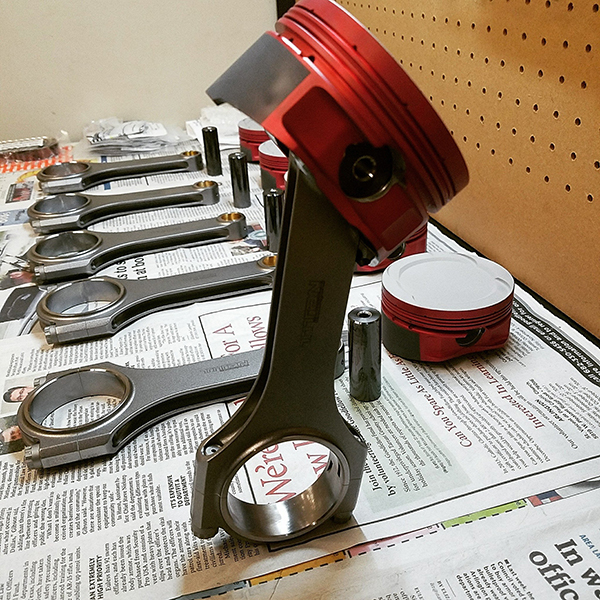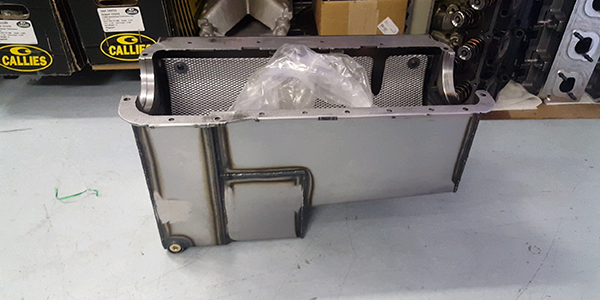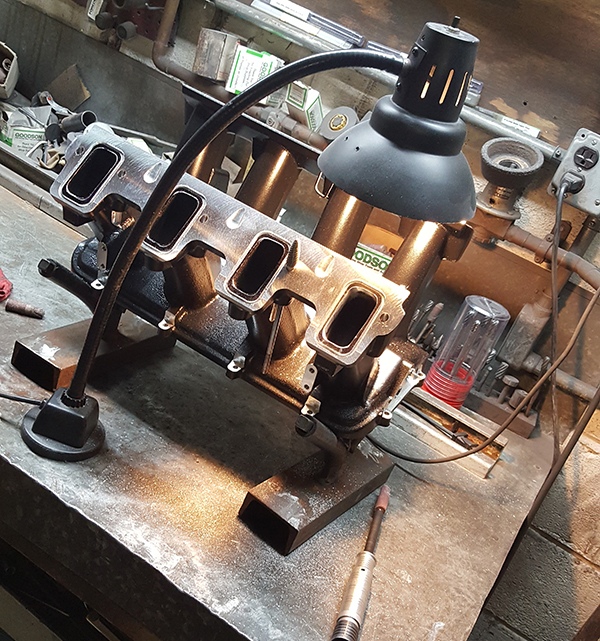In part 1 of this series (March 2019), we explored the various intellectual property rights (IPR) available to help protect your new product developments. But once you’ve obtained your IPR, then what? What can you do when you find another person or business violating your patent, trademark, or trade dress? Below, we take a closer look at the steps you can take to enforce your IPR against unauthorized use.
Define Your Business Objectives First
Enforcing your IPR, like any type of legal action, is a significant undertaking. Before you embark on such an endeavor, you should take the time to define clear business objectives for yourself, and for your legal team. Failing to define and understand your business objectives can often lead to a frustrating and unsatisfying enforcement effort.

Stopping the other side from misusing your IPR, and recovering monetary damages for past misuse are two frequent goals. However, these should not be the only objectives you consider
Other objectives to consider include:
– Deterring would-be future misuse.
– Protecting your distributor(s) from having to compete against unauthorized counterfeits or knock-offs.
– Obtaining a long-term revenue source by licensing your IPR.
– Improving the value of your business and your IPR by demonstrating your willingness to enforce.
You may have many different objectives depending upon the situation. In any event, defining your business objectives from the start, and keeping them in the front of your mind throughout, can help to ensure a more successful, and less stressful, enforcement action.
E-Commerce Enforcement
E-commerce sites like Amazon, eBay, and Alibaba have taken over the retail sales market. However, the proliferation of these e-commerce sites also provides a new, broader outlet for counterfeiters to get their goods into the market.
Luckily, most e-commerce sites have taken steps to address IPR infringement on their platforms. For instance, Amazon has their “Amazon Brand Registry” – https://brandservices.amazon.com/?ref=asna_services_red where you can search for IPR infringers, and report cases of potential IPR infringement to have them removed from Amazon. eBay has a similar service known as the “Verified Rights Owner Program” – https://pages.ebay.com/seller-center/listing-and-marketing/verified-rights-owner-program.html. Chinese e-commerce giant Alibaba Group offers a similar program through their “IPP Platform” – https://ipp.alibabagroup.com/.

E-commerce enforcement can be a useful tool when your business objective is simply to stop others from infringing your IPR. However, you should be aware that most e-commerce sites require you to submit details regarding your IPR registration before they will even consider removing an infringing listing. For more information regarding registering your IPR, see part 1 of this article from the March 2019 issue.
Customs and Border Protection
Customs and border protection offers a unique and useful tool when dealing with counterfeits and knock offs imported from other countries. Most countries, the United States included, will monitor imports entering the country for suspected IPR infringement, and seize infringing goods at the border. A few countries, most notably China, also monitor exports leaving the country.
Customs and border protection enforcement typically begins by recording your registered IPR. For example, U.S. Customs and Border Protection allows IPR owners to record their IPR registrations using the Intellectual Property Rights e-Recordation (IPRR) system – https://iprr.cbp.gov/.
Recordation alone will not guarantee successful enforcement. Most countries do not have the resources to inspect every shipment. To improve your chances at a successful enforcement, you can work with customs and border protection personnel to help them identify shipments that might contain infringing goods. A seasoned IPR private investigator can help you identify potential infringers overseas, obtain information about their shipments, and improve your chances at a successful customs and border protection enforcement effort.

Customs and border enforcement is most useful when your business objective is to keep infringing goods out of the marketplace in a particular country. You can also utilize customs and border enforcement to deter future infringers by publicizing the results of your enforcement effort.
Civil Litigation
Civil litigation – in which you file a lawsuit in state or federal court against an alleged IPR infringer – is often the first thing that comes to mind when considering IPR enforcement. However, it is often the most expensive enforcement option, particularly in the United States where costs for discovery, motions, expert reports, jury trials, and appeals can run into the hundreds of thousands of dollars or more. Depending on the country, it can often be more cost effective to litigate overseas.
That being said, civil litigation does have its place in your IPR enforcement toolbox. In fact, if your objective is to obtain monetary compensation from those infringing your IPR, civil litigation may be your only option. Should you prevail in court, you may be able to recover monetary damages from the infringing party in addition to injunctions to stop future infringement. You can also use civil litigation to negotiate a settlement which compensates you for past IPR infringement and/or provides you with ongoing royalty payments in exchange for allowing the infringing party to continue using your IPR.
Civil litigation also provides a great opportunity to build deterrence and improve the value of your IPR by demonstrating your willingness to enforce. You can improve the deterrence effect by publishing information about your civil litigation efforts throughout the course of the lawsuit.
Enforcing Your IPR Internationally
Enforcing your IPR overseas doesn’t need to be as scary as the pundits would have you believe. Every country – even China – has mechanisms in place for enforcing IPR. Often, these enforcement mechanisms are less costly and more effective than those found in the U.S. Before embarking on enforcing your IPR overseas you should review the various enforcement mechanisms in that particular country with your legal team, and evaluate which mechanism(s) best align with your business objectives.

For example, China has at least three mechanisms in place for enforcing your IPR. One enforcement mechanism available in China is an administrative action at the local IP office, which has authority to issue orders stopping future infringement. China – like many countries – also has criminal enforcement actions available for certain IPR infringements. These criminal enforcement actions are conducted by the government, and can result in a raid on the factory by local authorities who will seize and destroy infringing products.
China also offers a civil litigation option to enforce your IPR. Civil litigation in China is very different from U.S. litigation. While U.S. litigation often involves lengthy and expensive discovery and expert reports, Chinese litigation is predicated on you obtaining samples of the infringing product – often through private investigators – before filing your lawsuit. These samples are then notarized and provided to the court for evaluation. This process provides the court with the information necessary to decide your case while limiting the expensive discovery procedures found in U.S. litigation. In addition to being subject to monetary damage awards and orders stopping future infringement, business owners found to have engaged in counterfeiting are also punished with points against their state issued business license. A business owner who gets too many points against their business license can lose their license, and their ability to start future businesses.
Of course, no matter which country you enforce in, and no matter which enforcement mechanism you utilize, you will need to have your IPR registered in that country. This requires a certain amount of pre-planning on your part to identify countries that may have a market for your products, and countries where counterfeit products might originate.
The Cease and Desist Letter
If you simply want to stop someone from continuing to infringe your IPR, the classic cease and desist letter is often the most effective means for achieving that objective. You can also use a cease and desist letter to open licensing negotiations.
A good cease and desist letter should contain at least these elements:
– It should clearly identify the IPR (patent, trademark registration, etc.) that you believe the other party infringes,
– It should clearly identify the product that you believe infringes your IPR,
– It should set forth concrete action items that you want the other party to take, such as stopping the sale of infringing products, removing print and online advertising, destroying packaging containing infringing trademarks, etc.
Be careful, however, to avoid making your cease and desist letter too heavy handed. Threating imminent litigation in the event that the other side does not comply with your demands can trigger them to file a declaratory judgment lawsuit against you. In the declaratory judgment lawsuit the other party asks a court to decide that their product does not infringe your IPR – putting you on the defensive and beginning an expensive litigation that you may not have intended.
Conclusion
With registrations in hand, you have many options for enforcing and monetizing your IPR. Many of these options exist not only in the U.S., but also overseas. However, before embarking on any enforcement activity, you should carefully consider your business objectives for doing so. An experienced IPR attorney can help you define your business objectives, and guide you through the enforcement process.










